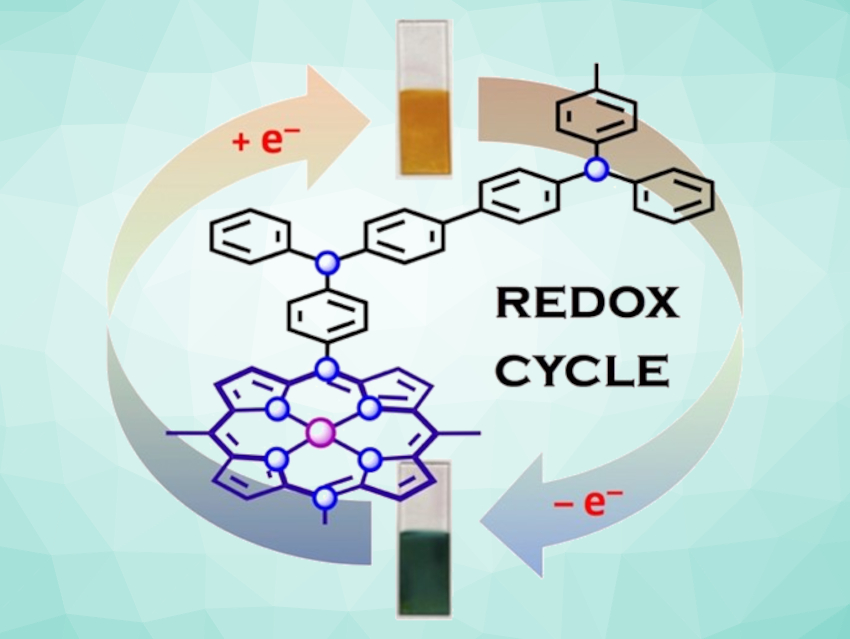Artificial porphyrins are useful materials due to their optical and electrochemical properties, which can be associated with readily tunable multiple redox processes. The construction of new candidates that can respond to wide voltage ranges could expand the applicability of optoelectronic porphyrin-based materials.
Yoshihiro Matano, Niigata University, Japan, and colleagues have used a combination of two types of redox-active species, 5,15-diazaporphyrins and amines, to address this issue. The team prepared hybrids comprising 5,10,15,20-tetraaryl-5,15-diazaporphyrinoids (TADAP) and tertiary amines using a metal-templated cyclization method. The hybrids electrochemically polymerize to afford the corresponding TADAP–amine polymers on the electrode.

The resulting polymer films show multiple reversible redox processes (examples pictured) over a range of 2.5 V, accompanied by distinct color changes. The polymer films have electric conductivities up to 2·10–3 S m−1. The work shows the potential of TADAP–amine hybrids for developing redox-switchable sensitizers and conductive polymer materials.
- Synthesis, Optical Properties, and Electrochemical Behavior of 5,10,15,20‐Tetraaryl‐5,15‐diazaporphyrin–Amine Hybrids,
Yuna Satoh, Yutaro Fujita, Naoya Muramatsu, Ko Furukawa, Tadaaki Ikoma, Mao Minoura, Haruyuki Nakano, Yoshihiro Matano,
ChemPlusChem 2021.
https://doi.org/10.1002/cplu.202100429




